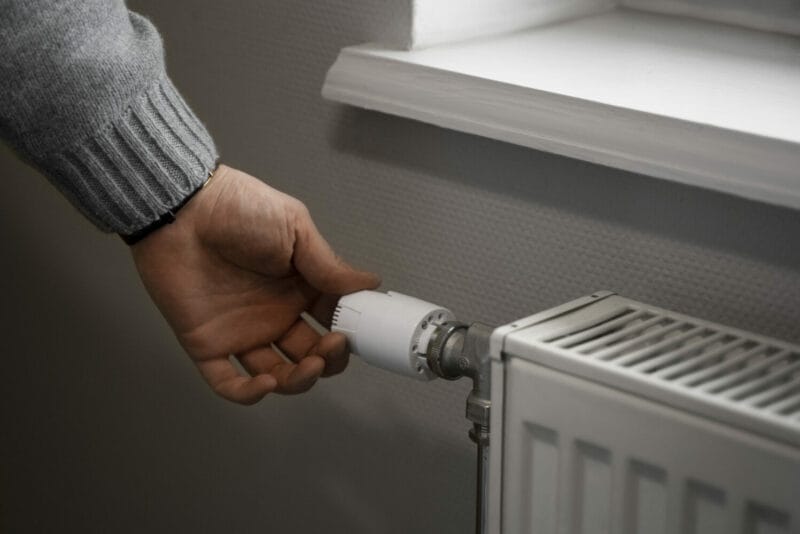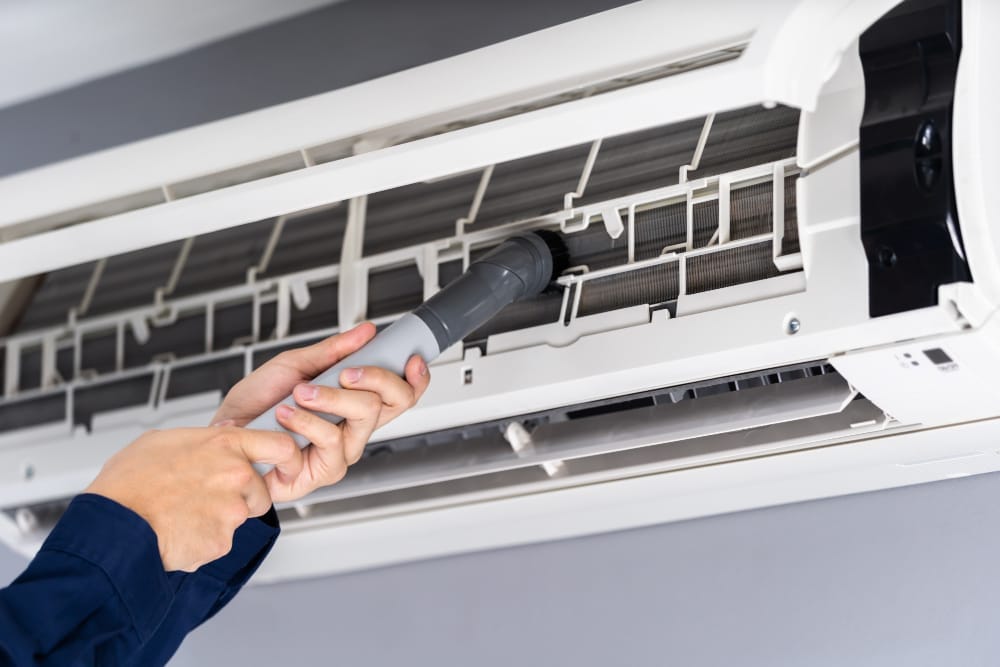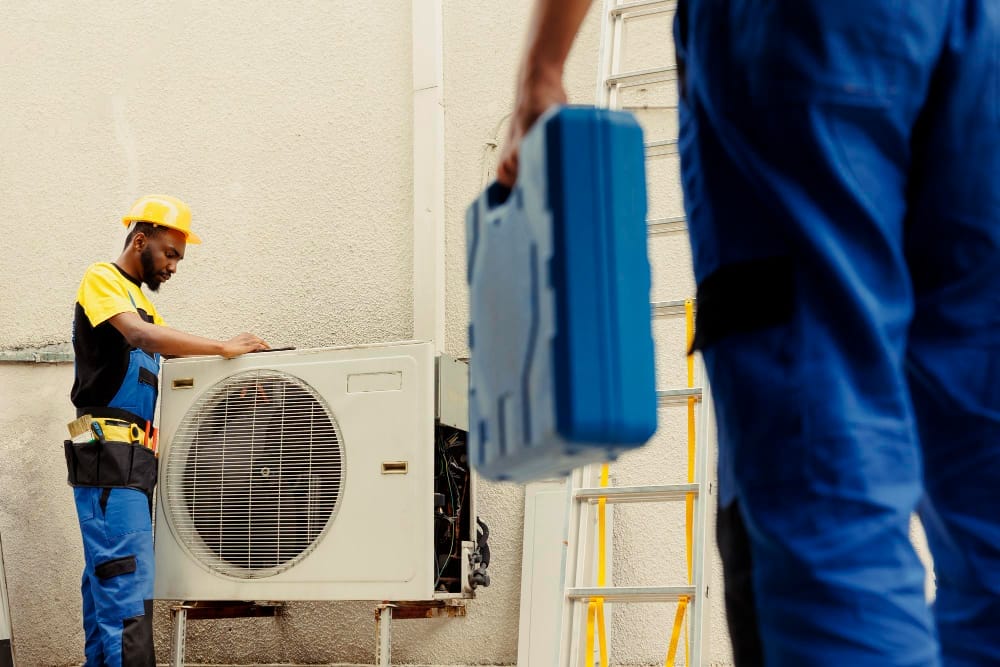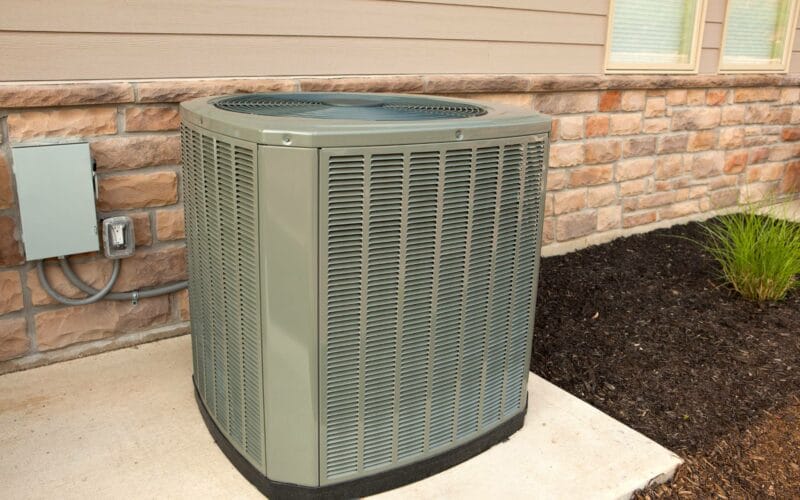Navigating the climate of Montgomery County can be a unique challenge, especially when it comes to maintaining optimal air conditioning performance.
The fluctuating temperatures of this area demand a strategic approach to cooling your home.
This guide is tailored to help you understand the direct impact of Montgomery County’s weather on your HVAC system, offering expert advice for efficiency and durability. We’ll discuss maintenance tips and air condition solutions to keep your living space comfortable through the changing climate.
Montgomery County’s Climate Overview
Montgomery County offers a climate that’s as dynamic as it is demanding, particularly when it comes to regulating your home’s temperature. Understanding the local weather patterns is critical for any homeowner looking to achieve optimal comfort and air conditioning efficiency.
Temperature Variations and Extremes
In Montgomery County, the thermometer tells a story of wide-ranging temperatures. Average highs in the peak of summer can reach a toasty 86°F, while the cooler months of January and February see average lows that can drop to a chilly 27°F. This spectrum of temperatures means your air conditioning system must be versatile enough to provide comfort during the humid heat of July and the crisp cold of the winter months.
The high humidity accompanying the heat adds another layer of complexity, as HVAC systems have to work harder to cool and dehumidify your home, ensuring a comfortable and healthy indoor atmosphere.
Precipitation Patterns
The climate’s effect on your HVAC system isn’t limited to temperatures; precipitation and humidity levels play significant roles, too. The area sees consistent rainfall throughout the year, with averages that can affect indoor humidity levels, prompting your AC to put in extra effort to maintain a dry, cool environment.
Montgomery County’s precipitation doesn’t just bring rain; it also brings seasonal storms that can push your heating and cooling system to its limits. Power outages and surges during storm seasons can cause wear and tear on your system, while heavy rains can impact the outdoor components of your AC.
The Effects of Montgomery County’s Climate
The climate in Montgomery County plays a role in the performance and efficiency of your heating and cooling system. With the region’s unique weather patterns, understanding how these conditions impact your HVAC system can help you maintain a consistently comfortable home.

Effects on Your Heating System in the Colder Months
Montgomery County’s cooler months bring challenges that directly impact the heating aspect of your HVAC system. With average high temperatures gradually descending from a mild 64°F in November to the colder realms of 41°F by January, the demand for consistent and efficient home heating becomes paramount.
The low temperatures, often dipping to near freezing, especially from November through February, necessitate a heating system that can respond quickly and maintain a steady indoor temperature. The HVAC system has to work harder as the outside temperature contrasts sharply with the desired warmth indoors. This increased workload can lead to more frequent cycles and, subsequently, higher energy consumption.
The cold temperature can stiffen the oil and lubricants that keep the heating system’s components running smoothly. It can also cause contraction in metal parts, potentially leading to malfunctions or the need for more regular maintenance.
Preparing your HVAC system to face Montgomery County’s winter means checking the insulation of your home, verifying the system’s integrity,, performing pre-winter maintenance, and if your heating and furnace is in need of repair contacting a reputable HVAC company is essential. This way, when the temperatures outside begin to drop, your heating system is ready to operate at peak efficiency, keeping your home warm and comfortable throughout the season.

Effects on Your Cooling System in the Warmer Months
In the warmer months, the cooling component of your HVAC system steps is the focus. With the mercury climbing, reaching an average high of 86°F in July, your system’s cooling efficiency becomes critical for maintaining a comfortable indoor environment.
The warmer months bring heat and increased humidity, which can dramatically affect the cooling process. Cooling systems do more than lower air temperature; they also remove moisture, which is abundant in Montgomery County’s summer air. This dual function places additional strain on the HVAC system, often leading to continuous operation during the peak heat hours of the day.
The high demand on cooling systems during these months can expose any underlying maintenance issues, such as refrigerant leaks or inadequate airflow, which can be exacerbated by prolonged use. It’s also a time when the difference between a well-maintained system and one that has been neglected becomes glaringly apparent, both in terms of performance and energy bills.
To counter these effects, ensuring that your system has been serviced before the onset of summer is essential. This includes checking the refrigerant levels, ensuring the coils and filters are clean, and confirming that the system is free of any potential blockages.
Proactive maintenance ensures that when the warmth of Montgomery County’s summer settles in, your HVAC system’s cooling efficiency is up to the task of providing relief.
The Right Heating and Cooling System for Varied Climates
When choosing between HVAC systems and other systems, such as mini splits, especially in areas with varied climates like Montgomery County, several factors play a role in determining efficiency and suitability.
HVAC systems, or central air systems, are designed to provide a consistent temperature throughout the home, using ductwork to distribute conditioned air. This centralized approach is particularly beneficial in regions with significant temperature shifts between seasons, as the system can efficiently switch between heating and cooling to maintain comfort.
Here’s why HVAC systems often edge out mini-splits in such environments:
- Integrated Heating and Cooling: HVAC systems are built to handle both heating and cooling needs. These systems offer seamless transitions between modes in climates with a wide temperature range, so indoor temperatures remain stable regardless of outdoor fluctuations.
- Whole-Home Comfort: Unlike mini-splits, typically designed to condition individual rooms or zones, HVAC systems are engineered to provide uniform air distribution throughout the home. This is particularly advantageous in varied climates, where changes in outdoor temperature can affect the whole house, not just isolated areas.
- Advanced Filtration: HVAC systems generally have sophisticated filtration options that purify the air as it circulates through the ductwork, reducing allergens, dust, and other pollutants. This is critical for maintaining indoor air quality year-round, regardless of external weather conditions.
- Energy Efficiency in Larger Spaces: HVAC systems can be more energy-efficient for larger homes than installing multiple mini-splits to cover the same area. Central systems are designed to cool or heat larger spaces effectively, which means they can achieve the desired indoor climate with potentially less energy consumption in varied climates.
- Cost-Effectiveness Over Time: The initial installation cost of an HVAC system can be higher than that of mini-splits. However, for homes that require both heating and cooling in a fluctuating climate, an HVAC system’s long-term efficiency and lower operational costs can make it more cost-effective over time.

Maintenance Tips for Optimal Performance
Efficiently managing your HVAC system in Montgomery County’s diverse climate requires diligence and proactive maintenance. Here are actionable tips to ensure your AC operates at its best.
Regular Cleaning and Servicing
- Pre-Season Tune-Ups: Essential for identifying and addressing issues before they escalate. Aim for a professional check-up each year.
- Cleaning Filters and Outdoor Units: Regularly replace or clean air filters to maintain airflow and efficiency. Keep the outdoor unit clear of debris to ensure unobstructed operation.
Upgrading Insulation and Sealing Leaks
- Enhance Insulation: Improving your home’s insulation keeps the cool and hot air in, easing the workload on your HVAC.
- Seal Leaks: Check for drafts around doors, windows, and ductwork. Use weatherstripping, caulking, or professional duct sealing to prevent cool and hot air loss.
These maintenance steps can improve your air conditioning system’s efficiency and lifespan. Contact a professional for HVAC services to support your system’s performance and create a more comfortable and energy-efficient home environment.
Keeping Up with Your HVAC System in Montgomery County’s Varied Climate
Understanding and mitigating the impact of Montgomery County’s climate on your heating and cooling system is key to maintaining a comfortable and energy-efficient home.
By embracing regular maintenance, addressing insulation and sealing, and staying aware of the unique challenges of local weather patterns, you can ensure your HVAc system remains robust and efficient. Taking proactive steps today will lead to lasting comfort and savings in the long run.


